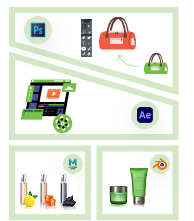A complex clipping path is a vector-based editing technique used to isolate an object or subject from its background or replace it. The Photoshop Pen tool is used to handle challenging edges like hair strands, fur, mesh fabrics, or transparent objects by preserving soft edges.
The complex clipping techniques offer pixel-perfect accuracy, creating multiple sub-paths for depth. Apparel, food, furniture, electronic items, and other images require complex clipping to represent a natural look.
The average cost of a complex clipping path in New York, USA, is around $7 to $10 per image. The pricing may vary depending on image types, editing complexity, and outsourcing.
What you’ll learn in this article
- 1 What is a Complex Clipping Path in Photoshop?
- 2 What are the Benefits of Using a Complex Clipping Path in Photo Editing?
- 3 What Types of Images Require Complex Clipping Paths the Most?
- 4 How to Create a Complex Clipping Path in Photoshop?
- 5 What Photoshop Tools are Best for Creating a Complex Clipping Path?
- 6 How Much Does Complex Clipping Path Cost in New York, USA?
- 7 How Can Outsourcing Complex Clipping Paths Improve Product Image Quality?
- 8 FAQs about Complex Clipping Path in Photoshop
- 9 Final Overview
What is a Complex Clipping Path in Photoshop?
A complex clipping path, also known as compound clipping, refers to an image editing technique where a closed vector path in Photoshop is used to isolate intricate objects with precision-fine details, irregular edges, or transparency. Complex clipping paths require advanced Photoshop skills to handle complex elements like hair, fur, jewelry, lace, glass, and so on.
The primary tool used for creating complex cutouts is the pen tool in Photoshop. From e-commerce to advertising, photography, and other industries require complex clipping paths for different product images as follows:
- Bicycles, machinery, and furniture with multiple cutouts.
- Transparent and semi-transparent objects like glassware.
- Hair, fur, and fabric with lace.
- Jewelry with chains and stones, and so on.
How is a Complex Clipping Path Different from a Basic Clipping Path?
A complex clipping path is different from a basic clipping path in terms of the level of intricacy, editing techniques, tool requirements, and editing complexity level. Other differences are as follows.
- Application: A basic clipping path or photo cutout is implemented on smooth, straight, or curved edges (e.g., boxes, bottles, etc.). In contrast, a complex clipping path is used for intricate objects with multiple curves, holes, or detailed edges (e.g., hair, fur, jewelry, lace, etc.).
- Use cases: The basic image clipping path works well for catalogs, flatlays, or simple cutouts. On the other hand, a complex clipping path is essential for high-end retouching, ads, and composites.
- Tools: A basic clipping path uses the Pen tool for straight lines or simple curves, often automated with Quick Selection or Magic Wand. Afterward, a complex clipping path needs manual editing—Select and Mask, feathering, or decontamination for a natural look.
What are the Benefits of Using a Complex Clipping Path in Photo Editing?
The benefits of using a complex clipping path in photo editing are pixel-perfect precise output, professional look, consistency, supporting advanced-level techniques, realistic composition, and resource saving. A complex clipping path is necessary for images with intricate or irregular edges, where a simple/basic path isn’t enough to isolate the subject properly, ensuring a professional and polished look.
- Pixel-perfect precision: Manual adjustments ensure clean and polished edges around complex objects like hair, fur, jewelry, or detailed product designs without jagged artifacts.
- Professional outlook: Complex clipping is useful for creating transparent or white backgrounds. It eliminates rough edges or pixelation, ensuring high-quality digital or print media visuals.
- Consistency across product photography: With professional cutouts, you get a uniform look (consistent color theme and backgrounds) across a collection of images, crucial for brands selling multiple products.
- Supports advanced image manipulation: It enables selective adjustments that are useful in product masking, beauty retouching, and special effects. It also helps with multi-layered editing, ideal for catalogs, digital ads, and magazine layouts.
- Realistic composition & shadows: Custom shadows can be added for seamless integration into new scenes; no leftover pixels or halos.
- Saves time & reduces cost: Automates bulk processing for large batches of product photos and reduces extra photography costs.
What Types of Images Require Complex Clipping Paths the Most?
Images with intricate details, complex shapes, and objects with irregular edges, multiple overlapping elements, or fine details, like jewelry, hair, fur, or others, require complex clipping paths. These types of images demand high precision and expert-level editing. Common product examples are:
Fashion & Apparel
- Hair & fur: Model images with wavy, curly, or frizzy hair require high-precision/complex clipping paths.
- Lace & sheer fabrics: Delicate textures and transparent materials need detailed paths.
- Accessories: Jewelry, handbags, and shoes with intricate designs (i.e., chains, embroidery, etc.).
Jewelry & Watches
- Gemstones & metalwork: Reflective surfaces and tiny details (prongs, engravings, etc.) need a high level of precision.
- Earrings & necklaces: Complex shapes with chains, loops, and dangling elements.
Food & Beverage
- Leafy greens & herbs: Salad, garnishes, or herbs with fine edges.
- Splash & liquid effects: Beverages with droplets or splashes require detailed editing.
Furniture & Home Decor Item
- Wicker & rattan: Textured surfaces with ornate woven patterns or carvings like chairs, sofas, tables, etc., require high-end clipping paths to integrate into catalogs or advertisements.
- Chandeliers & lighting fixtures: Multiple glass or metal strands.
Electronics & Gadgets
- Wires & cables: Tangled or overlapping cords with individual path adjustments.
- Detailed components: Circuit boards, small buttons, or ports.
Machinery & Automobiles
- Bicycles, motorbikes, cars, and others with detailed parts such as gears, spokes, or transparent sections.
Transparent or Reflective Objects
- Glassware, bottles, and other items with transparent or reflective surfaces require meticulous clipping to maintain transparency or reflections accurately.
How to Create a Complex Clipping Path in Photoshop?
To create a complex clipping path in Photoshop, use the Pen tool to draw a closed path around the desired area, then select the path in the Paths Panel and use “Make Selection” to create a selection. The in-depth step-by-step guide on complex shape editing in Photoshop is as follows.
Step 1: Open the Image in Photoshop
Open the edited image in Photoshop and duplicate the layer (Ctrl/Cmd + J) to store the original image file. Ensure the image is high-resolution for accurate selection. Zoom in to 300-500% for precision.
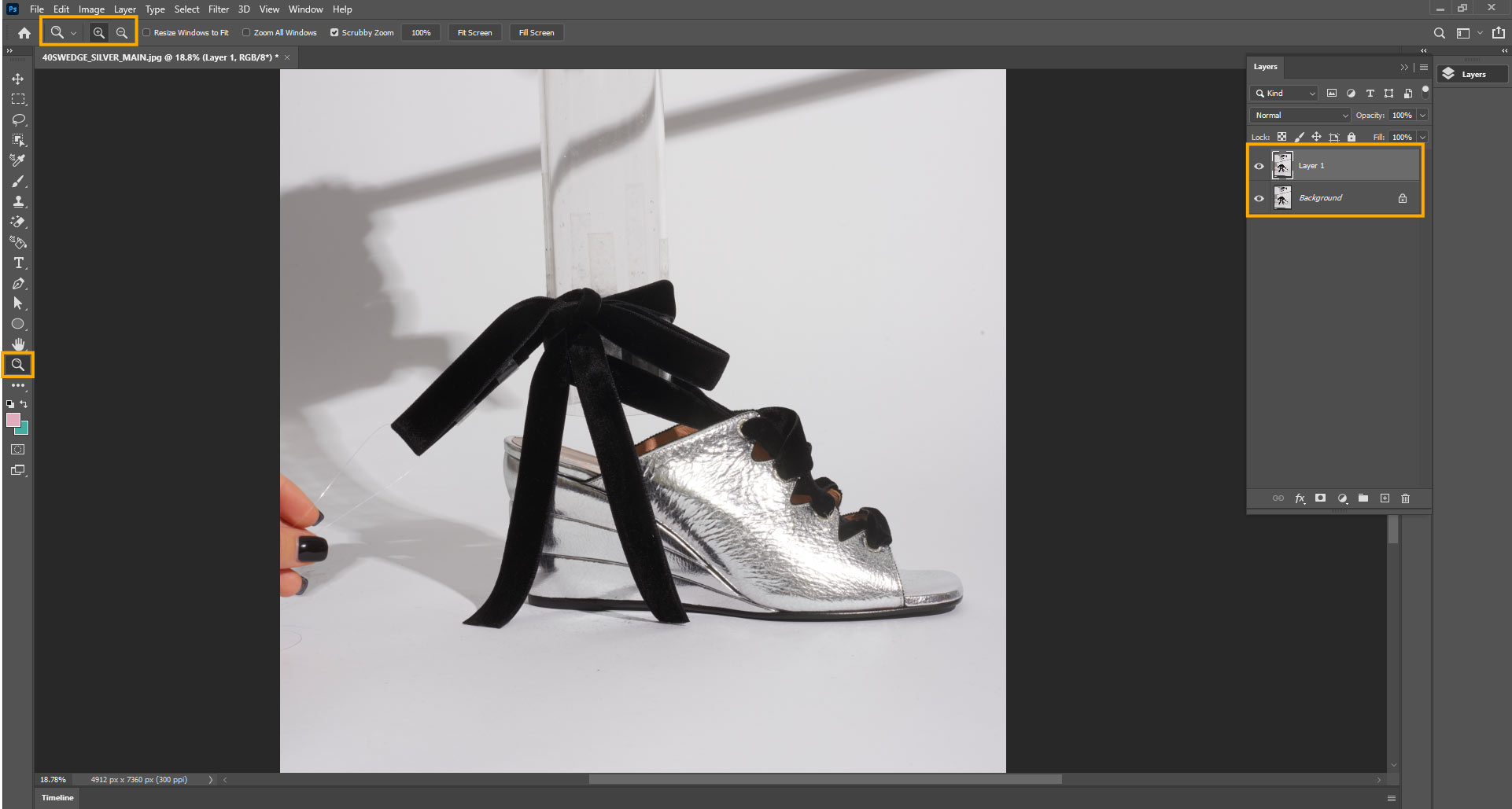
Step 2: Select the Pen Tool (P) from the Toolbar
Press “P” from the keyboard or select the Pen tool from the Photoshop toolbar. Set the tool mode to “Path” (not “Shape”) and choose a contrasting path color (i.e., red) for visibility.
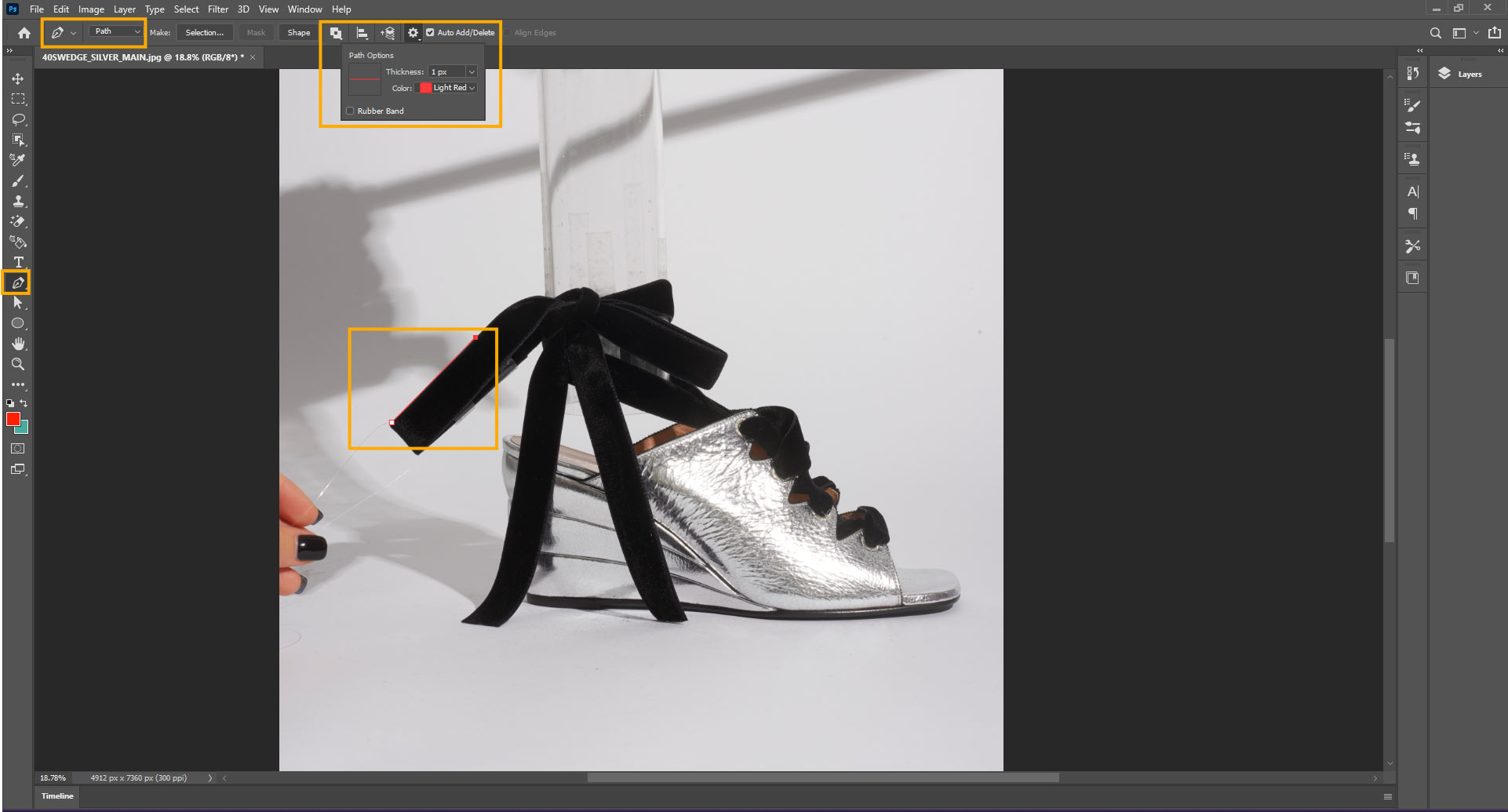
Step 3: Draw Your Path
Carefully draw a closed path around the area you want to isolate. Use anchor points at key curves (avoid straight lines). Hold Alt/Opt to adjust Bézier handles for smooth edges. Ensure the path is completely closed by connecting the last point to the first point.
- For hair/fur: Trace a rough outline first, then refine with Select and Mask.
- For transparency (glass, water): Use partial opacity in the layer mask later.

Note: Create multiple paths for complex objects, and for this, use the Subtraction Path to remove inner sections.
Step 4: Save the Path
Once the path is drawn, select it in the Paths panel (Window > Paths). Click the “Save Path” icon (the icon that looks like a floppy disk). Double-click the “Work Path” and rename it (i.e., Complex Clipping Path) and click “OK.”
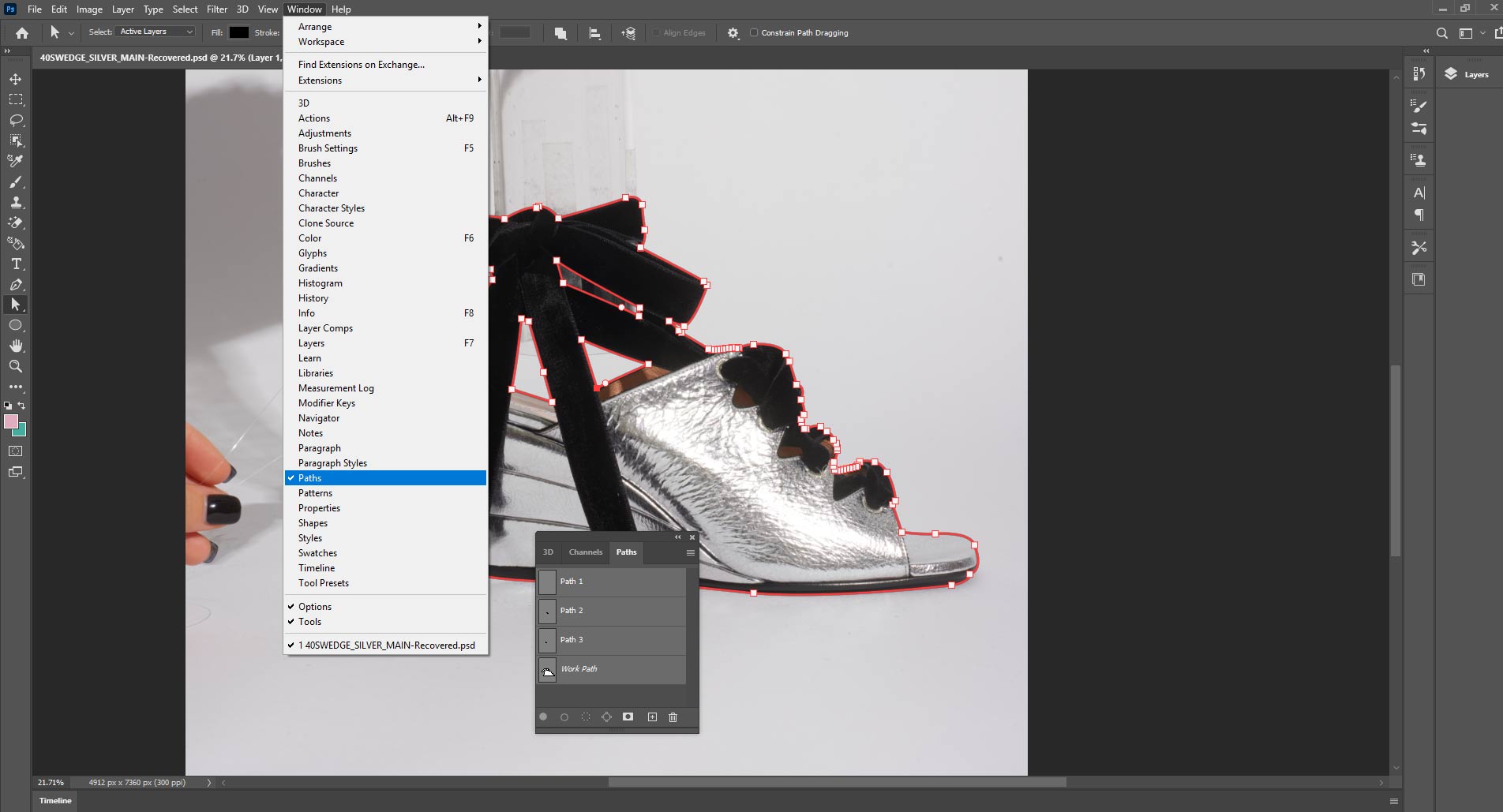
Step 5: Convert Path to Selection
In the Paths panel, select the path you just saved.
- In the Paths panel, select the path you just saved.
- Click the “Make Selection” icon (the icon that looks like a rectangle with a dotted outline).
- Set the “Feather Radius” to 0
- Click “OK“.
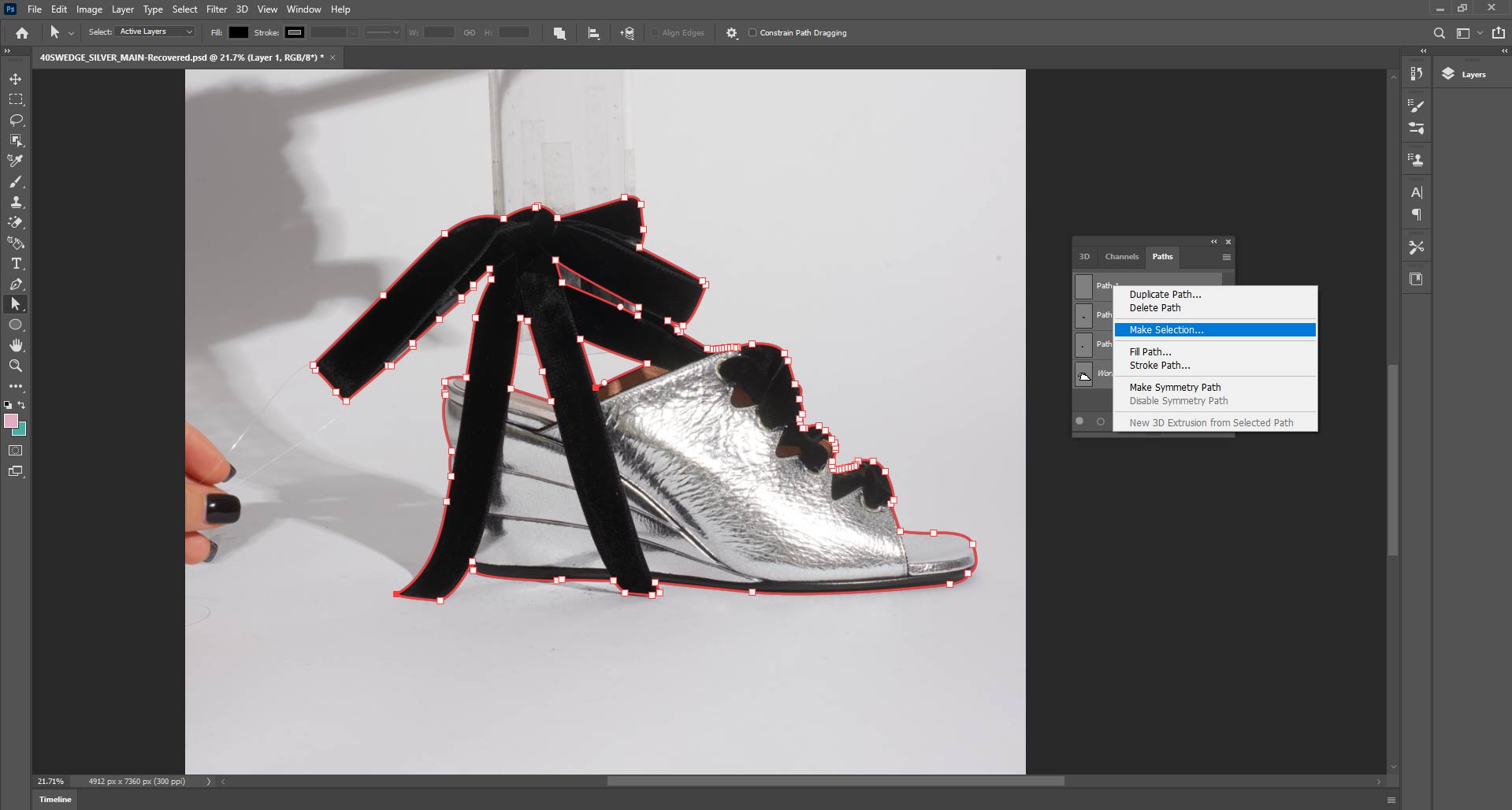
Step 6: Create a Clipping Mask
Go to the Layers panel and select the layer containing the image. Click the “Add Layer Mask” icon (the icon that looks like a rectangle with a circle inside) at the bottom of the Layers panel. The layer mask will isolate the subject from the background.
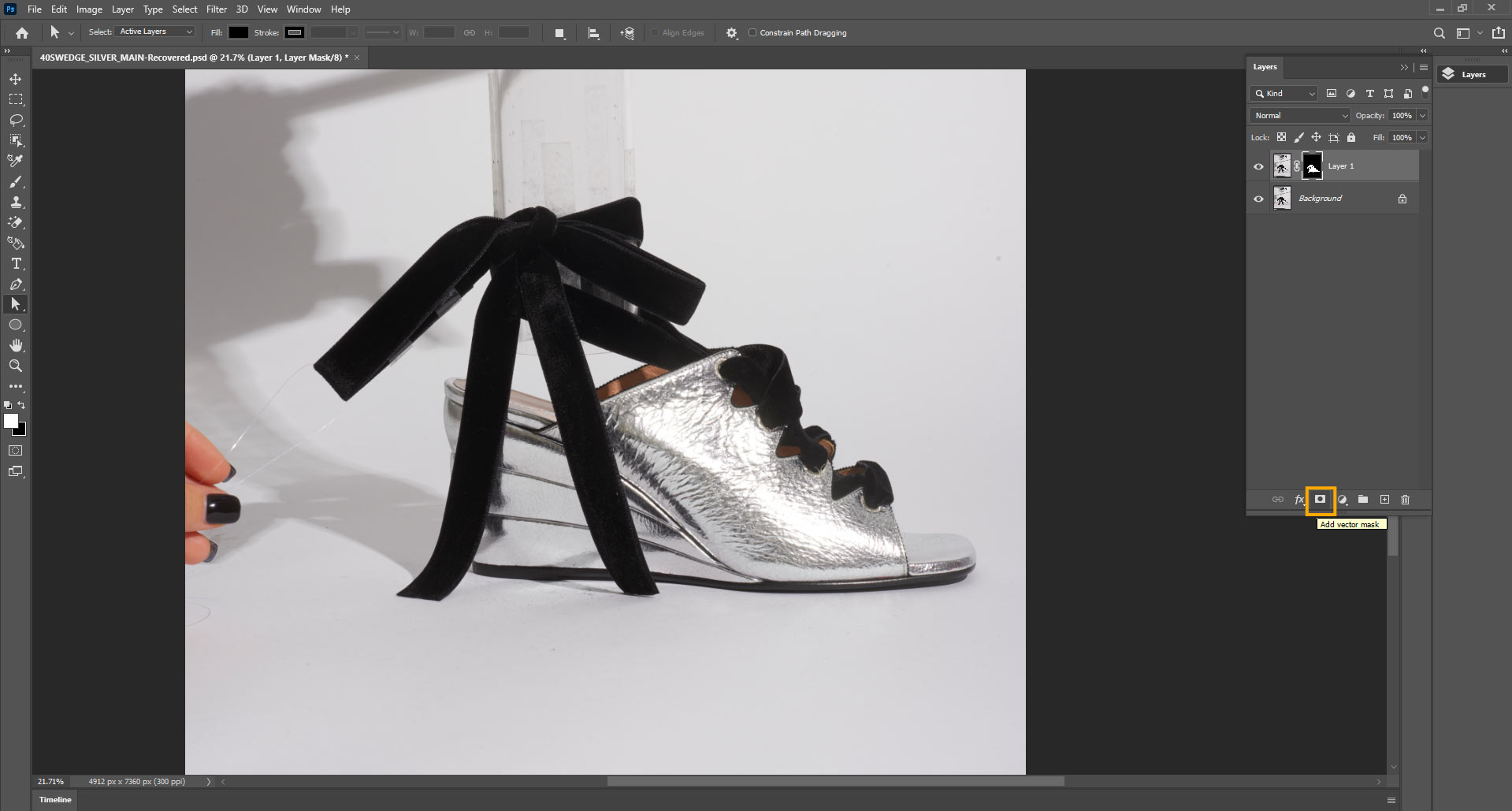
Step 7: (Optional) Refine the Mask
You can use the brush tool with a black brush to paint over areas you want to hide and a white brush to reveal areas. You can also use the “Select”> “Modify”> “Contract” or “Expand” options to fine-tune the selection. You can also use the Refine Edge Brush tool to capture wisps of hair. [Adjustments: Smooth (1-3), Feather (0.5- 1px), and Decontaminate colors (removes background spill)]
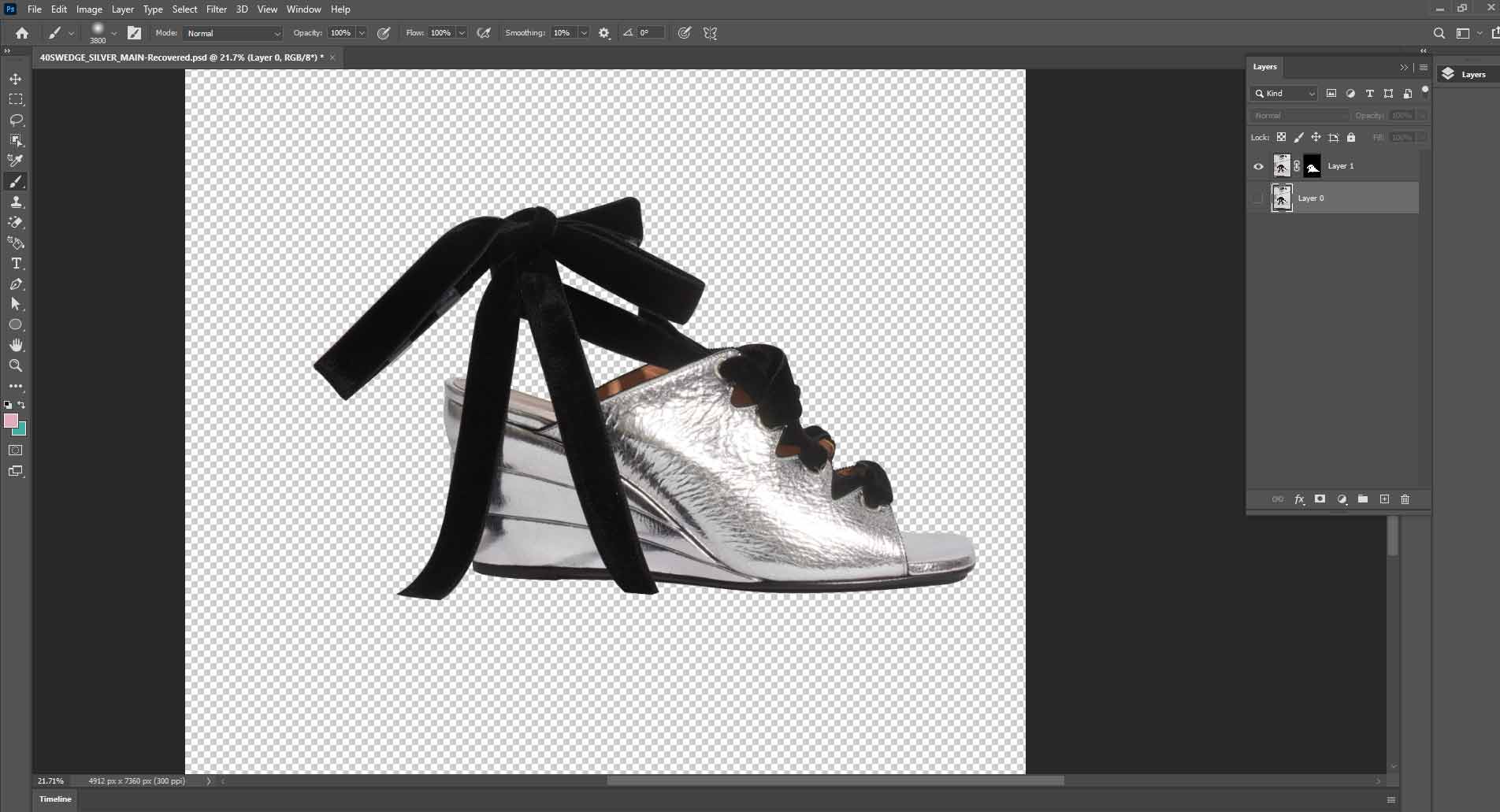
Step 8: Save the Path
If you plan to use the path again, save it as a Photoshop file or a “.ai file” to be used in Illustrator.
What Photoshop Tools are Best for Creating a Complex Clipping Path?
The Pen tool, Refine Edge tool, Layer Masks, Quick Selection tool, and Magnetic Lasso tool in Photoshop are best for creating a complex clipping path.
- Pen tool (primary tool): This tool is useful to create precise paths with smooth curves and sharp edges. You can easily control, adjust, and save the path in the Paths Panel for future edits. Best for hard edges (jewelry, products), smooth curves (glass bottles), and manual precision.
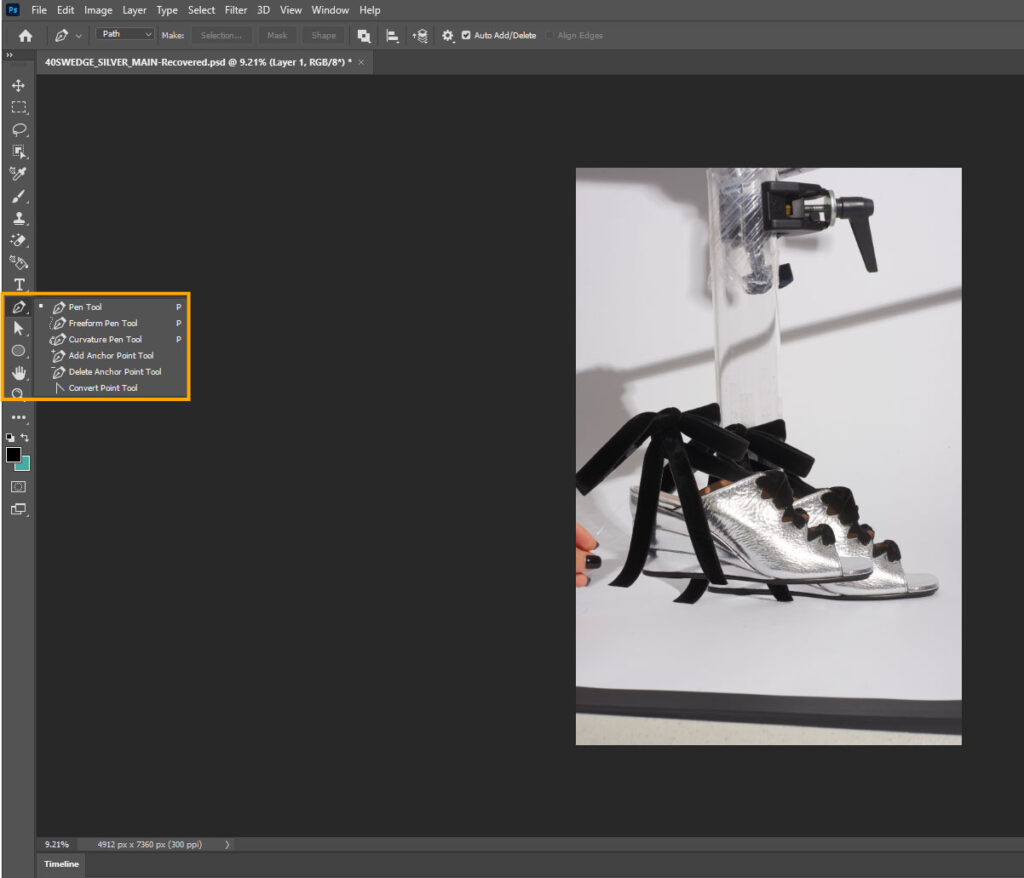
Pro tip: Hold Alt/Option to adjust individual anchor points and use Ctrl/Cmd to move or modify the path.
- Select and Mask (Refine Edge tool): This tool refines selections with soft or detailed edges (hair, fur, lace, etc.). When you use the Quick Selection tool (W), go to Select > Select and Mask and use the Refine Edge Brush tool to adjust fine details. You can adjust the Feather, Contrast, and Shift Edge sliders for smooth blending.
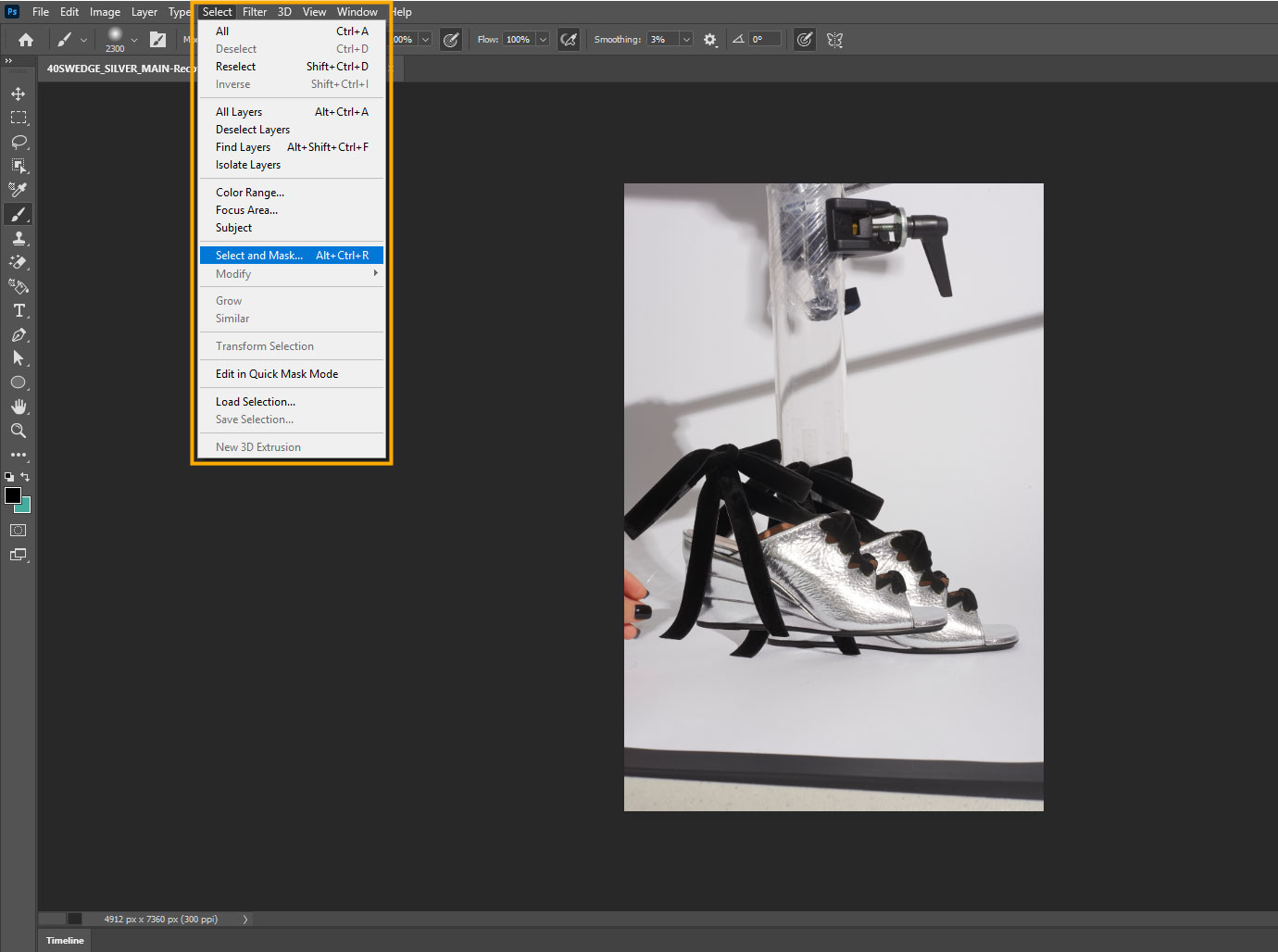
- Paths Panel: From storing to managing multiple paths, you can use the Paths Panel, and for this, go to Window > Paths to access saved paths. Convert a path to a selection through Ctrl/Cmd + Click on the path and then save paths as Clipping Paths for export in print media.
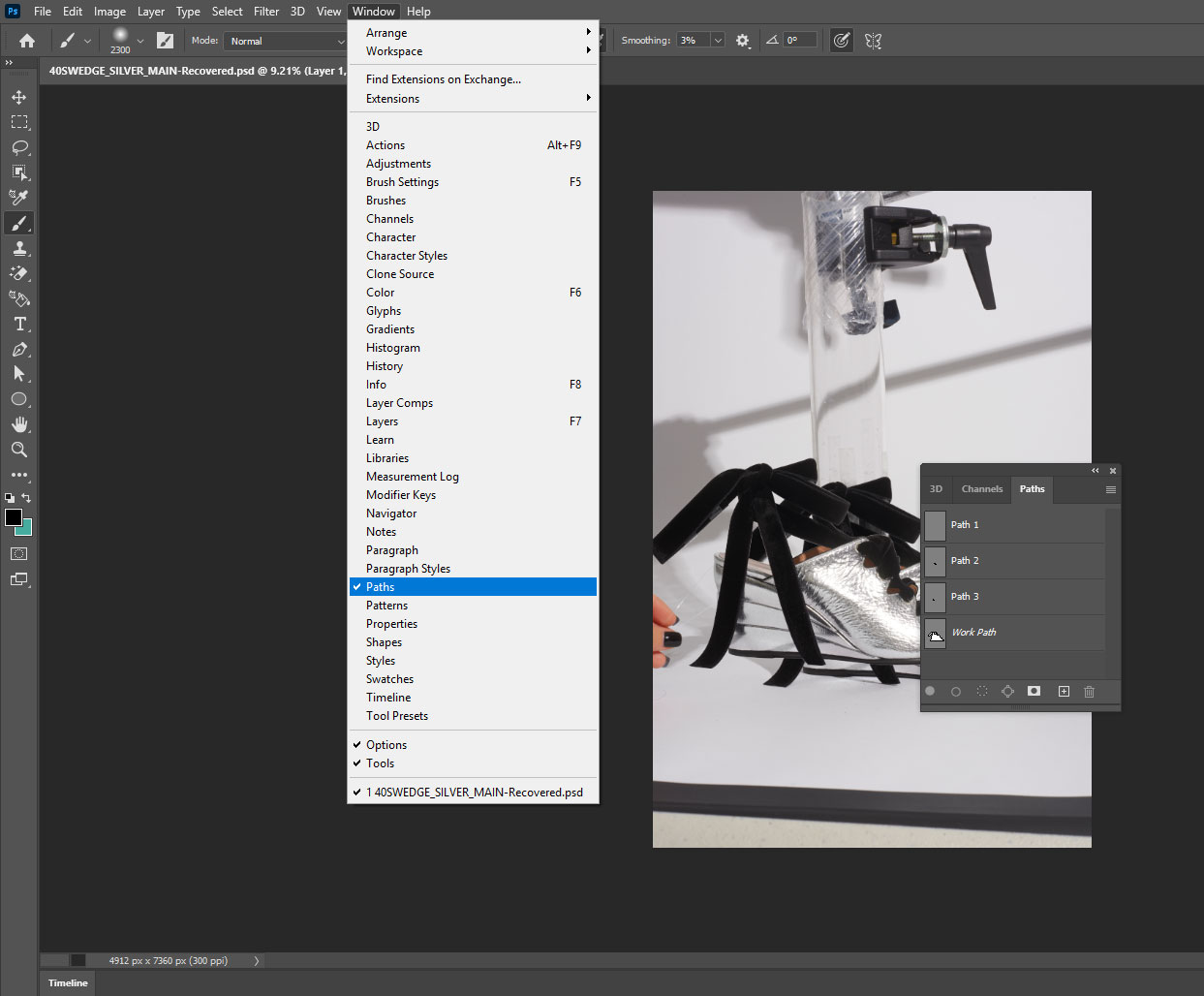
- Layer masks: With this tool, you can experience non-destructive editing, which allows you to paint away imperfections after creating a path.
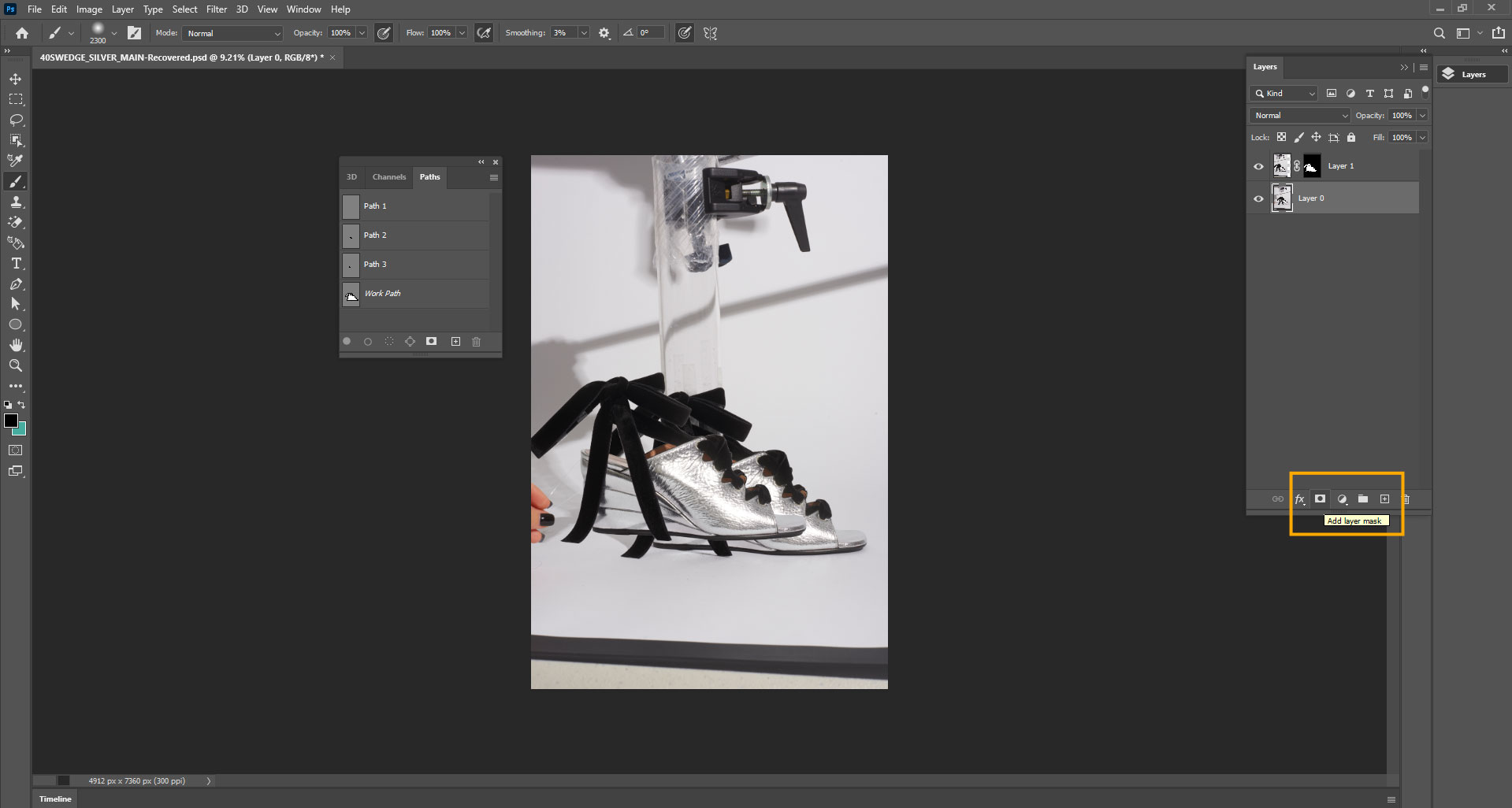
- Quick Selection tool: This tool is good for fast, rough selections before manual refinement. The initial selection of subjects with mixed edges.
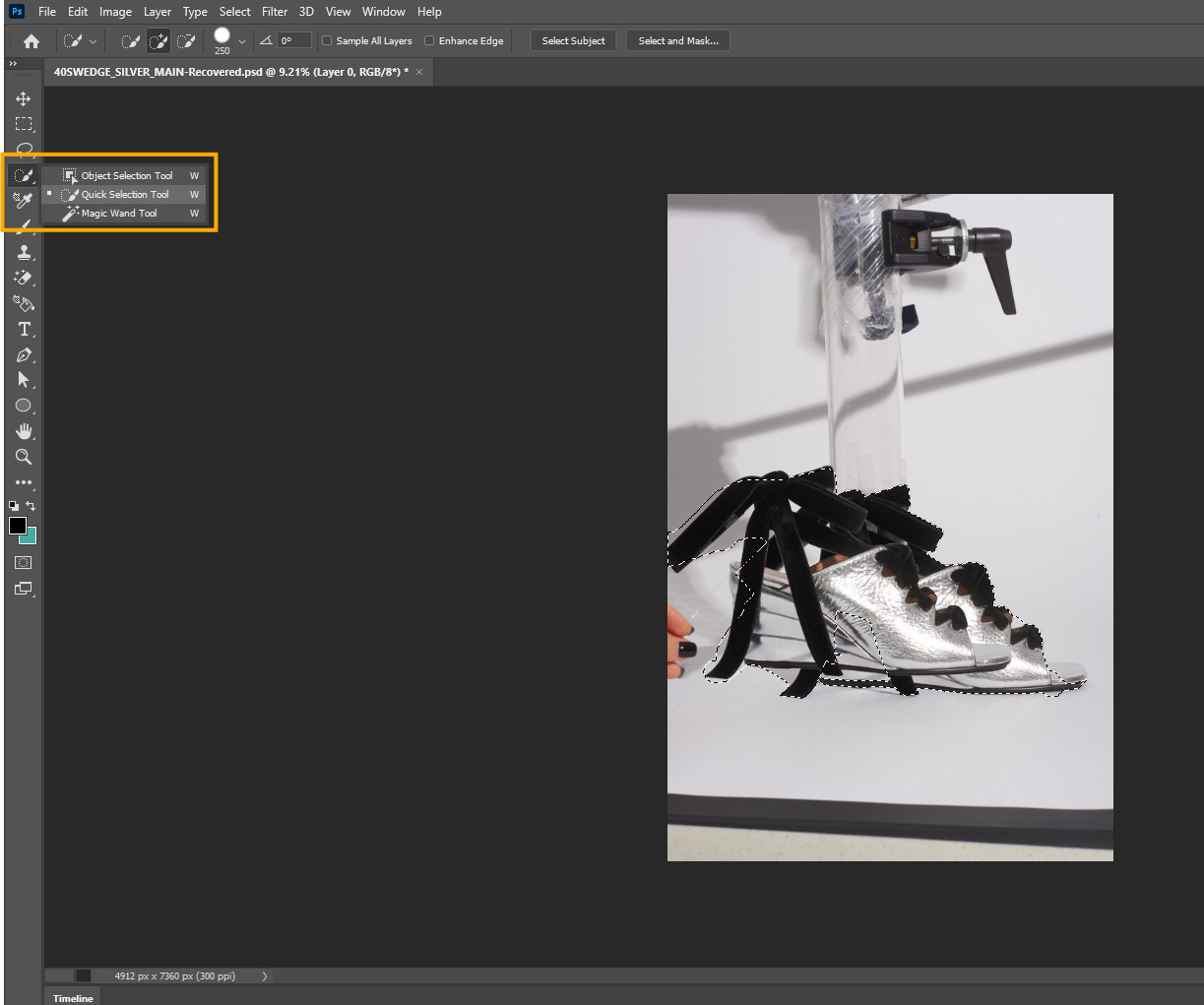
- Magnetic Lasso tool: From snaps to edges, the Magnetic Lasso tool is effective for moderately complex shapes, objects with clear contrast against the background.
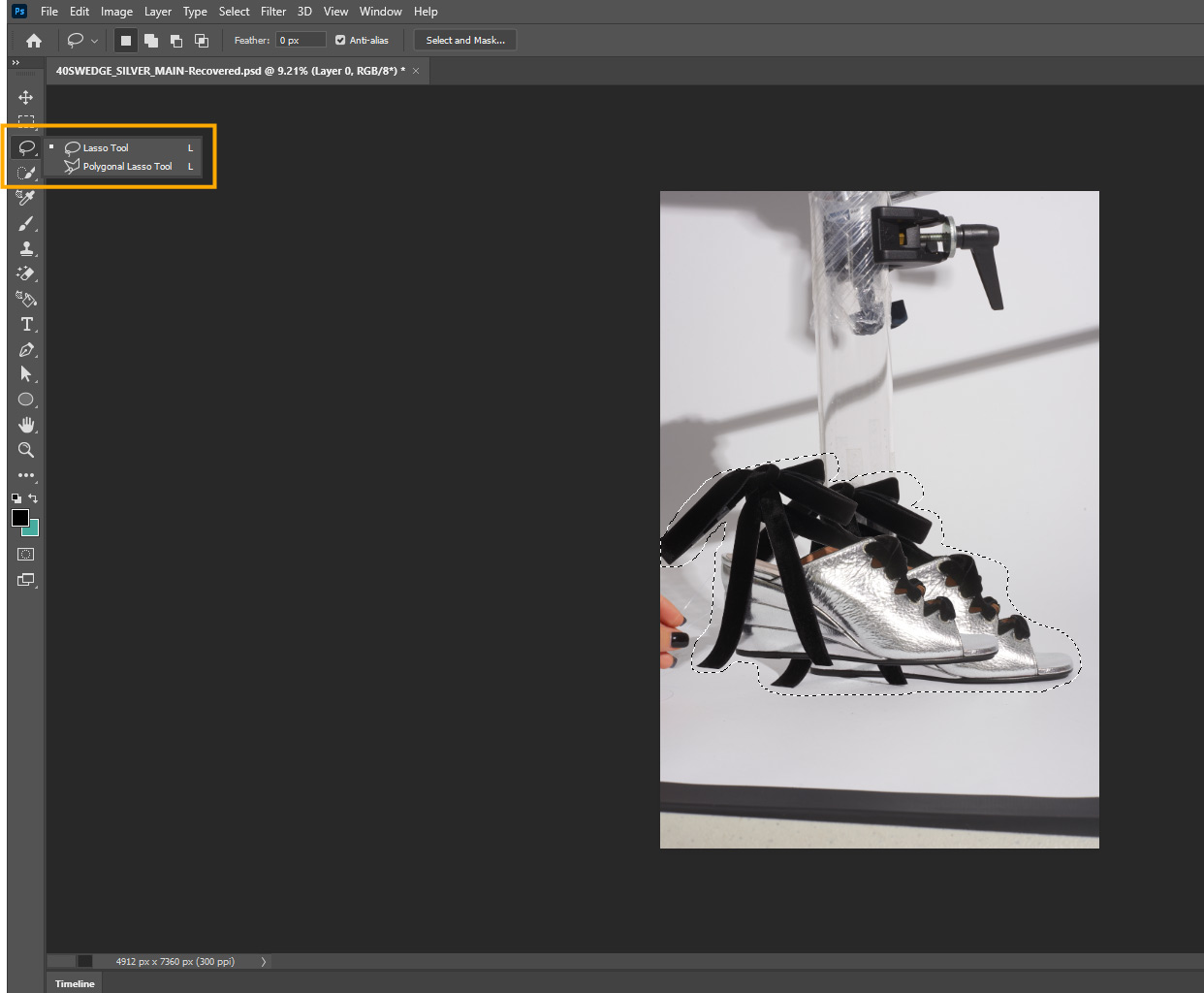
How Much Does Complex Clipping Path Cost in New York, USA?
The average cost of a complex clipping path in New York, USA, starts at $7. The pricing differs based on product complexity, bulk image editing projects, custom editing requirements, and so on. Professional photo clipping path service providers offer basic to advanced and custom-level clipping path solutions to meet the needs of visuals in photography, e-commerce, manufacturing, advertising, and digital marketing industries. Professionals from different industries rely on outsourcing clipping services for the following reasons.
- Reliable, secure, and custom image editing solutions
- High-quality, accurate, and scalable results
- Precision clipping path with advanced techniques
- Access to skilled professionals with standardized workflows
- Wide range of other retouching, masking, and shadow creation services
- Cost-effective pricing structure and bulk discount
- Transparent and clear communication
- 24/7 customer support
- 3-step quality control
- Fast turnaround
- Project Secure Guaranteed
How Can Outsourcing Complex Clipping Paths Improve Product Image Quality?
Outsourcing Complex Clipping paths to a professional clipping path service provider company improves product image quality by ensuring precision, efficiency, and consistency. Whether for e-commerce, advertising, or branding, outsourcing helps businesses achieve professional visuals while saving time and resources. The 5 key facts behind outsourcing complex clipping paths are as follows:
1. Pixel-Perfect Precision
Expert clipping path service providers manually clip paths, accurately isolate intricate objects, and preserve fine details like curves, holes, and transparency. Industry-expert professionals with years of experience, advanced tools, techniques, increasing sales, and boosting brand reputation.
2. Consistent Branding Across Marketing Channels
Cohesive product galleries provide buyers with trust. Online marketplaces like Amazon, eBay, and Shopify demand clean, professional, and feature-rich product images. By outsourcing, you’ll fulfill digital market platforms’ requirements more effectively.
3. Advanced Edge Refinement
Auto-selection tools struggle with transparency (glass, water, glossy products, etc.) or complex textures. Photo editing experts use Select & Mask, feathering, and decontamination to ensure a natural look.
4. Faster Turnaround for Bulk Orders
When you’ve less time to launch new products or need to deal with bulk product image editing, outsourcing to a clipping path agency allows businesses to meet tight deadlines while focusing on marketing, sales, and product development.
5. Cost-Effective Solutions
Outsourcing offers discounts on bulk editing, cost-effective pricing, paying only for services rendered, and reducing overhead costs while accessing professional expertise.
Pro Tip: Want to see real results? Check out our case study on how a clipping path service helped professional photographer Courtney Conk build unwavering client trust. It’s a great example of how clean edits can elevate brand credibility.
FAQs about Complex Clipping Path in Photoshop
Can a complex clipping path be used for images with multiple subjects?
Yes, a complex clipping path can be used for images with multiple subjects when you need to isolate specific elements or parts of the image for further retouching.
Can complex clipping paths be automated, or do they always require manual editing?
Yes, complex clipping paths often require manual editing for precision and accuracy. However, AI-powered tools can automate some aspects of complex clipping paths but may struggle with complex images with soft edges, fine details, intricate shapes, and so on. Complex clipping examples, fluffy animals, flowers with many petals, or others require manual editing.
How long does it take to create a complex clipping path for a single image?
Creating a complex clipping path for a single image will take 1-3 hours, depending on image complexity, skill level, and tools used.
Is it better to outsource complex clipping path work or do it in-house?
Yes, it is better and more efficient to outsource complex clipping path work rather than in-house. Outsourcing can be more cost-effective than hiring in-house staff, provides access to expertise, saves time, and improves image quality.
How do you choose between a clipping path and a mask for complex images?
For complex images, choosing a clipping path is suitable when you need to draw a vector path around the subject, and choosing a mask is when you create a mask layer that hides or reveals parts of the image.
Final Overview
- A complex clipping path is a vector-based advanced image editing technique used for catalogs, advertisements, banners, e-commerce product listings, and so on.
- Images with intricate details, multiple curves, overlapping objects, and fine edges require complex clipping paths for a professional and natural look.
- The Photoshop Pen tool is used to create complex clippings, and other tools are the Refine Edge tool, Layer Masks, Quick Selection tool, and Magnetic Lasso tool.
- The average cost of a complex clipping path in New York, USA, is around $7 to $10 per image.

